Introduction:
Fanny Farget (GANIL)
General presentation of GANIL

Bio:
I am a nuclear physicist, PhD and with habilitation for PhD supervision.
I have spent my scientific career at GANIL for 15 years, became specialist in the field of fission. I have been appointed as scientific director of the National Institute for Nuclear Physics and Particle Physics in 2016, and I am back in GANIL as deputy director since 2022.
Session 1: Landscape of Irradiation Facilities in Europe
Session Chair - Alessandra Costantino (ESA)
Picture coming soon.
Gerd Datzmann (Datzmann Interact & Innovate)
Overview on the Irradiation Facilities within RADNEXT and beyond
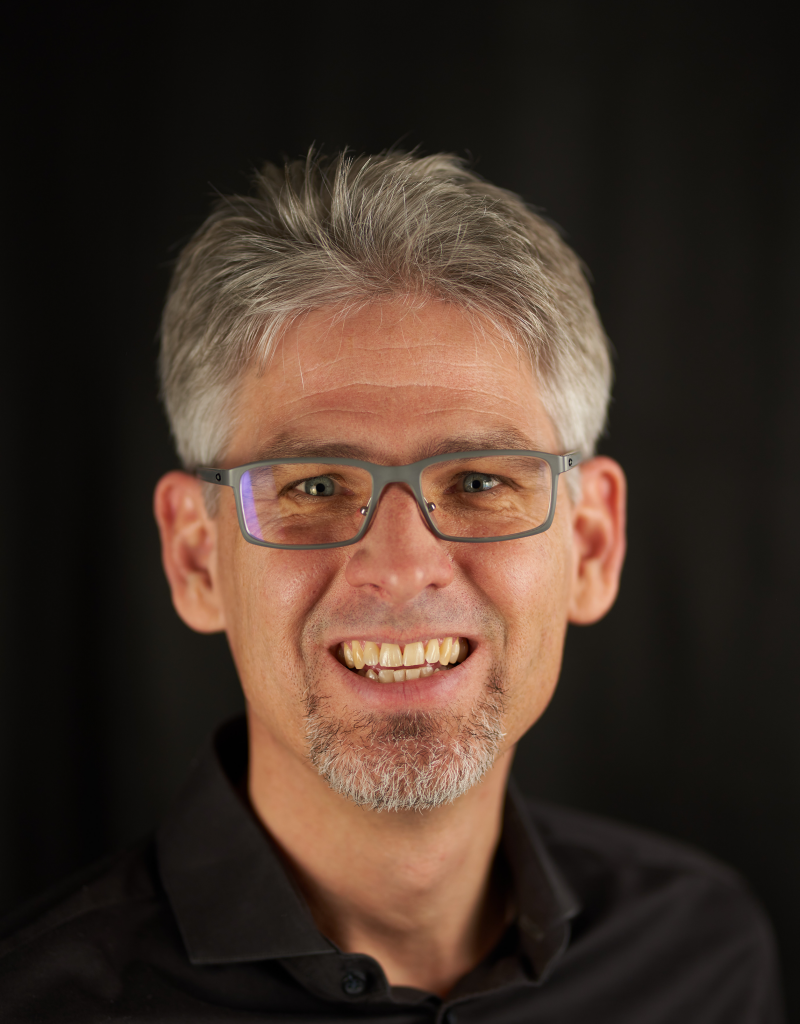
Bio:
Dr. Gerd Datzmann is a physicist by education and specialized in nuclear and accelerator physics at the Technical University Munich (TUM). During his PhD project, he developed and operated a nuclear microprobe for high energy protons and heavy ions.
After his PhD, Gerd Datzmann became head of physics at a company that built the first privately financed proton therapy center for cancer treatment in Europe, the RPTC in Munich.
In 2016, Dr. Datzmann founded his own company Datzmann interact & innovate GmbH (DINI). DINI provides a portfolio of services centering on accelerator applications in the field of advanced material analytics, proton therapy and radiation hardness testing.
Datzmann interact & innovate GmbH is a partner in the EU-program RADNEXT and is actively engaged in outreach and dissemination as well as in technology transfer activities to industry in the field of radiation hardness testing.
Abstract:
Radiation hardness qualification procedures for electronic and microelectronic components as well as systems and boards often require testing at facilities – providing highly energetic protons, heavy ions, neutrons, electrons, gammas and to some extent pulsed X-rays, lasers, etc. – emulating the radiation effects of the devices under test close to reality. These probing radiations are generated mostly at particle accelerators or research reactors located almost exclusively at universities or publicly funded research institutions. Thus, users from industry as well as users from space agencies or academia are dependent on these institutions for providing them a fee-based service.
In recent decades, a variety of research facilities across Europe have opened their doors to external users, offering beam time at their accelerators and radiation probes. Certain facilities have developed professional services, providing regular beam time to commercial customers and academic users. This presentation will highlight European irradiation facilities that provide high-energy protons and heavy ions as well as neutrons and other types of radiation, showcasing established sites for standard device qualification and radiation hardness assurance. Over half of the facilities in the RADNEXT consortium offer either heavy ions or protons, and we will present an overview of their key technical parameters. Some facilities boast unique technical capabilities, suitable also for non-standard applications or R&D challenges in radiation effects.
The landscape of these facilities is dynamic, with some closing permanently and others beginning operations. Additionally, many irradiation facilities are planning upgrades to enhance their technical capacities, such as increasing fluxes or energies to better meet user requirements. Existing facilities are also evaluating the expansion of their service provision, i.e. offering more beam time hours for radiation hardness testing. Furthermore, some proton therapy facilities that previously did not offer beam time to external users are now considering starting this service. This presentation aims to provide a concise overview of the current changes and activities in this field.
Rubén García Alía (CERN)
HEARTS@CERN: High-energy heavy ion testing in Europe

Bio:
Rubén is an applied physicist at CERN, working on radiation-matter interaction and radiation effects to electronics for 15 years. He is the scientific coordinator of the HEARTS and RADNEXT EU projects and has coordinated, together with his colleagues Natalia and Andreas, the HEARTS@CERN facility development activity at CERN.
Abstract:
The presentation will include the status and outlook of the HEARTS@CERN high-energy heavy ion facility at CERN, putting it in the broader context of high-energy heavy ion testing facilities worldwide. It will include a summary of the developments over the past few years that have resulted in the user readiness of the facility, as well as a presentation of the key beam parameters of interest for radiation effects testing users. The impact of beam fragmentation on mono-LET experiments, as well as the possible use of beam fragmentation for radiation effects testing, will also be covered.
Martina Bauer (GSI)
High-Energy Heavy Ion Testing of Electronics at GSI

Bio:
Martina is a life scientist with over 10 years of experience in innovation management, technology transfer, and collaboration with industry. She is Deputy Head of the Technology Transfer Staff Department at GSI Helmholtzzentrum für Schwerionenforschung in Darmstadt, Germany. At GSI, she also coordinates industrial beam time activities and fosters partnerships that bring accelerator technologies into applications in healthcare, materials science, and energy - translating cutting-edge research into real-world impact.
Abstract:
Radiation hardness testing is crucial for the development of electronic components used in extreme environments such as space. Ionising radiation, particularly galactic cosmic rays (GCR) and solar wind, poses a major challenge to the reliability of electronic systems. To test radiation resistance, components have to be exposed on the ground, before the flight, to simulated space conditions to ensure their performance and reliability. Whilst tests on custom-made electronic chips are traditionally performed at low-energy particle accelerators, the recent widespread use of COTS (components-off-the-shelf) requires very high energy and charge ions to test radiation hardness. GSI becomes one of the only options in Europe.
Nancy Postiau (UCL)
Best practices for a successful test campaign in the UCLouvain Heavy Ion Facility

Bio:
Education: Civil Engineering degree in material science, working at UCLouvain (CRC) since 1990.
Position: Director of the Cyclotron Resource Centre of UCLouvain.
Different fields of activities until now:
- Research in the ECR ion sources field.
- Study of beam dynamics inside the cyclotrons.
- Study and development of a cyclotron devoted to the acceleration of radioactive beams for nuclear astrophysics.
- Project manager for the beaming of polymers intended for the production of microporous membranes.
- Organization and follow-up of the requests related to the use of HIF-LIF facilities since 2013.
- General management of the CRC facility
Abstract:
Starting from T0 (the need to schedule some tests with heavy ions for the devices) up to the test campaign, what should be the different steps and the best timeline for the project?
Preparation of the setup, test plan and devices, estimation of the duration of the tests, booking of beamtime, rights and duties, limits of what the facility offers... These many aspects will be reviewed to ensure a fruitful collaboration.
This will also include some practical aspects to ensure that the beam time slot is used optimally: compatibility of board and flanges, delivery of the equipment on time, arrive at the site early enough to prepare the installation before the start of the time slot...
Session 2: From Industry For Industry
Session Chair - Philipp Bender (Infineon)

Karsten Ermisch (Infineon)
Terrestrial Cosmic Ray Robustness Testing of Memories and Memory-like Structures at Infineon

Bio:
Karsten Ermisch received a PhD in Physics at the University of Groningen, the Netherlands for his research in 3-Nucleon scattering in 2003. His research took place at the Kernfysisch Versneller Institute Groningen. After working in various positions at Qimonda and Infineon Technologies, he is since 2010 responsible for the Measurement-Methodology, Qualification and Characterisation of Radiation-Induced Single-Event Upsets in Memories and Memory-like structures, such as e.g. SRAM and FlipFlops.
Abstract:
As has been known by now for almost 50 years, natural occurring ionizing radiation, foremost alpha-particles from mold compound and solder material as well as terrestrial neutrons produced in the atmosphere by cosmic radiation, pose a severe problem for memories like SRAM or DRAM and memory-like structures such as FlipFlops.
As the areas of those structures decrease with technology nodes, the single-event upset rates per Megabit or MegaFlipFlop decrease, even though with voltage-scaling, the critical charge, which must be deposited for an SEU to take place, also decreases. However, due the higher density made possible by smaller structures, the amount of SRAM and FlipFlops used in actual products increases, leading to a constant or even increasing SEU rate per product.
To ensure the quality of products and prevent customer-fails, the so-called Soft-Error Rates (SER) of SRAMs and FlipFlops need to be determined accurately and in detail to understand the magnitude as well as the implications on applications and safety-measures.
Some of these effects may have a small occurrence-probability for the single application but can, due to the wide usage and distribution of the application, still have a sizeable effect for the overall population. Therefore, even failure-modes with small occurrence-probability need to be accurately measured to determine necessary and adequate safety mechanisms.
This talk will outline the measurement methodology performed at Infineon together with the implications for the experimental boundary conditions, among else, the conditions required at irradiation facilities.
Roberta Pilia (Thales Alenia Space)
New Challenge For Radiation Testing in Space Industry

Bio:
I am Roberta Pilia, I am an electronic Engineer and I work as Radiation Effect Engineer for Thales Alenia Space. I work at project level for Thales Alenia Space and I follow all radiation related activity in terms of:
- Quality point of view: Radiation Control board
- Support to project in radiation technical aspect: (Radiation testing, impact at system level)
Abstract:
Nowadays, because of the growing of design challenge and the development of the so called “New space market”, there is a huge need to test sensitives parts quickly according to project requirements. In this context, industries try to balance between test requirements, strict timing and test facility availability. In this presentation, an overview of the radiation test activity from industry point of view will be presented. A special focus will be given regarding the key information that could be helpful for a preliminary trade off in order to find the best solution according to technical need and facility availability.
Alexander Dyer (Dyer Space)
An SME Perspective of Radiation Testing Challenges
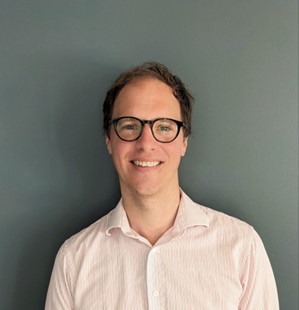
Bio:
Alex Dyer is a Radiation Effects Engineer with a strong background in space radiation environments and Radiation Hardness Assurance (RHA). He began his career as a PhD researcher, specializing in radiation effects, before contributing to multiple CubeSat payload missions as a research fellow. Since then, he has focused on implementing RHA practices within New Space companies, bridging the gap between agile commercial approaches and the rigorous standards of traditional space customers.
Abstract:
With the rapid expansion of New Space Small and Medium Enterprises (SMEs), the demand for access to a limited number of radiation testing facilities worldwide is increasing. These fast-moving companies require timely access to such facilities; otherwise, radiation effects become an afterthought, often addressed late in the design cycle—if at all. Additionally, many SMEs delay hiring dedicated radiation engineers until reaching a critical size, relying instead on external consultancy to bridge this gap.
To address these challenges, an alternative approach can be envisioned: a shared-access model for radiation testing, akin to the "Rideshare" concept in the launch industry. This service, potentially integrated into initiatives like RADNEXT or directly offered by radiation test facilities, would enable SMEs without dedicated radiation teams to access critical testing resources more efficiently.
This presentation will explore the barriers SMEs face in incorporating radiation testing into their rapid development processes and discuss potential solutions to enhance accessibility, streamline integration, and support innovation in the New Space sector.
Session 3: System Level Testing
Session Chair - Matthew Gill (Space Radiation Services)

Malcolm McCarthy (NSRL)
Testing with High Energy Ions at the NASA Space Radiation Laboratory
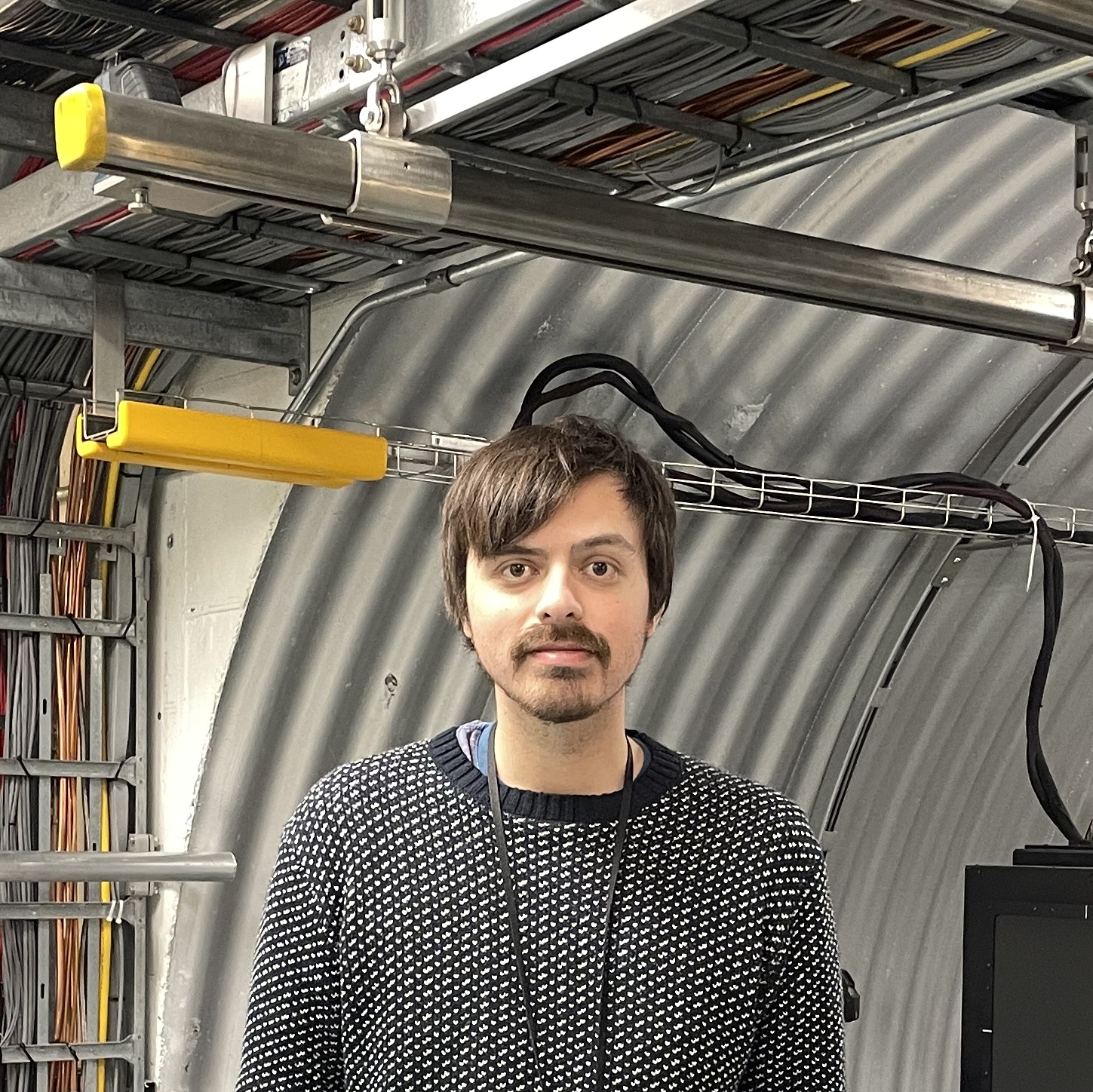
Bio:
Malcolm is an operator at the NASA Space Radiation Laboratory, an accelerator beamline facility at Brookhaven National Laboratory. Prior to joining NSRL, he worked in reactor operations and radiation transport modeling at a neutron radiography lab.
Abstract:
The NASA Space Radiation Laboratory (NSRL) is a facility that was designed to simulate the space radiation environment. Experimenters make use of high energy (up to ~1 GeV/n) ion beams for radiobiology research and electronics testing, the latter of which will be the focus of this talk. In this talk, I will describe NSRL's unique capabilities, recent upgrades, and potential future improvements.
Lembit Sihver (Cosmic Shielding)
Characterization of NVIDIA Jetson Orin System-On-Chip (SOC) behind shielding exposed to proton and heavy ion beams
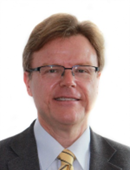
Bio:
Prof. Dr. Lembit Sihver is the founder & CTO of the Cosmic Shielding Corporation, and he has led the development of CSC´s Multifunctional Shielding Polymer MSP/Plasteel. He has more than 35 years of experience related to radiation transport, modelling and simulation, nuclear physics, nuclear engineering, and medical radiation physics. He is a full Prof. In Nuclear Chemistry, in Nuclear Science and Engineering and in Medical Radiation Physics with Specialization in Ion Therapy.
Abstract:
This is a presentation of measurements of Single Event Effects (SEEs) on NxN edge computing modules running on COTS NVIDIA Jetson Orin NX System-On-Chip (SOC), from now on called Devices under Testing (DUTs), behind MSP/Plasteel and Aluminum (Al) exposed to 63 MeV protons and 180 MeV/u Xe ions. The proton SEE measurements were performed at TRIUMF particle accelerator centre in Canada, and the 180 MeV/u Xe ion SEE measurements were done at HIMAC in Japan. The DUTs were tested with no shielding, behind Al, and behind MSP/Plasteel, with the same areal density as the Al. The collimator was set so the beam focused on the system-on-module (SOM) area of the DUT. The DUTs was connected via UART and SSH simultaneously, which allowed for remote data logging to the lowest debug level using UART and allowed for offloading the onboard data log using a faster connection utilizing SSH over ethernet with the DUT. The UART connection to the DUT was provided with a USB-C to UART adapter, which was connected to the host machine in the control room. The host machine was connected to the DUT using an ethernet connection which allowed the host machine to establish a SSH connection with the DUT. A DC power supply was also connected to the host machine allowing it to digitally monitor and log the output of the power supply. The behavior of the processor engines, such as the CPU cores, GPU cores, NVDLA engines, memory controller fabric, and the multimedia complex was monitored and logged. In addition, the temperature and the power were also continuously monitored and logged. The actions of the watchdog/radiation mitigation software, and the manually performed reboots/ power cycling were tracked. A clear correlation between error rate and particle flux was seen, with an increased error rate at higher flux levels. The DUTs failed behind Al at a significantly lower total fluence than behind MSP/Plasteel with the same areal density. As expected non radiation hardened SSDs were the first to fail.
Wouter Benoot (EdgX)
From Planning to Beam Time - A Startup's Journey in New Space Radiation Testing

Bio:
Wouter is the co-founder and CTO of EDGX, a Belgian startup aimed at transforming satellites into intelligent data hubs. A little over a year ago, EDGX began developing a novel data processing unit, with the goal of bringing commercial-off-the-shelf processing capabilities to space. To achieve this, the team has spent many nights at radiation testing facilities, and they are eager to share their experiences.
Abstract:
Radiation testing remains a challenging rite of passage for any new startup venturing into space electronics. Without the extensive resources of established aerospace players, startups must build their expertise from scratch by studying complex radiation effects and environments, scouting and securing test facilities, and planning efficient test campaigns—all while managing tight budgets, strict timelines, and lean teams.
Testing commercial off-the-shelf (COTS) components rigorously yet cost-effectively is key to driving value in new space products. We have undergone a journey from initially learning about radiation effects to screening various COTS components for Total Ionizing Dose (TID) under gamma radiation and Single Event Effects (SEE) using heavy ions and protons. Whether screening simple DC/DC converters or complex integrated circuits—such as Non-Volatile Memory express (NVMe) Solid State Drives (SSDs) or an NVIDIA Jetson Orin—each test provides a new learning opportunity and a chance to solidify your expertise and product reliability.
Throughout this journey, we learned valuable lessons—how to prioritise tests for maximum insight, optimise facility usage, and adapt our methodologies to fit the realities of a startup environment. Although radiation testing is traditionally costly and resource-intensive, we focused on pragmatic approaches that enable us to make informed decisions without incurring excessive overhead. In this talk, we offer an inside look at how a New Space startup approaches radiation testing by sharing our experiences, results, and insights to help others navigate a similar path.
Maarten Schild (Dawn Aerospace)
Board-Level Radiation Testing: Challenges and Benefits

Bio:
Maarten Schild is an aerospace engineer with a strong background in software and system engineering. As Propulsion Operations Lead at Dawn Aerospace, he is responsible for the design, implementation, and execution of ground and on-orbit operations of their propulsion systems. Previously, he worked at a radar technology startup and conducted research in orbital dynamics and space debris.
As one of the many hats you wear at a scale-up, Maarten is part of the radiation work group at Dawn Aerospace, contributing to radiation analysis, including Total Ionizing Dose (TID), Proton Beam, and Heavy Ion testing.
Abstract:
With growing demands of a fast-paced commercial space industry, time-efficient and cost-effective radiation testing are crucial for ensuring reliability in harsher radiation environments. However, most new space companies lack experience in radiation testing, making it challenging to navigate the complexities of test planning, execution, and data interpretation.
We adopted a staged approach, starting with Co-60 (TID) and proton irradiation before moving to heavy ions. This helped us refine test methodologies and equipment, identify susceptible components earlier, and verify software error detection and correction implementations before committing to a complex heavy ion campaign.
Traditional component-level testing, which typically involves part de-lidding and assessments at lower-energy facilities, proved uneconomical for our large test campaign. Instead, board-level testing at high-energy facilities provided significant cost and scheduling advantages while eliminating the risk of damaging de-lidded parts.
However, board-level testing has its own challenges. While "Test as You Fly" is generally effective for environmental validation, we found limitations in radiation testing. Using flight hardware boards, combined with non-uniform irradiation from high-energy double-sided exposure, led to unintended under- and over-irradiation of components. Additionally, inaccuracies in effective LET values introduced uncertainty in test results. Another challenge was limited scheduling flexibility at high-energy facilities, where extended lead times and availability largely dictated our electronics qualification timeline.
Furthermore, we encountered a lack of clear guidelines, and standards for board-level testing in new space applications, particularly regarding flux rates, ion selection, and front/backside irradiation strategies when adherence to traditional standards such as ESCC 25100 was not viable.
To address these challenges, we propose increased collaboration between industry stakeholders, facility operators, and standards bodies to document best practices for single event radiation testing for new space. By sharing our experiences, we hope to contribute to the development of guidelines that will benefit both startups and established players in the field.
Michael Campola (NASA)
Navigating Adaptive Radiation Hardness Assurance Approaches in a Changing Ecosystem
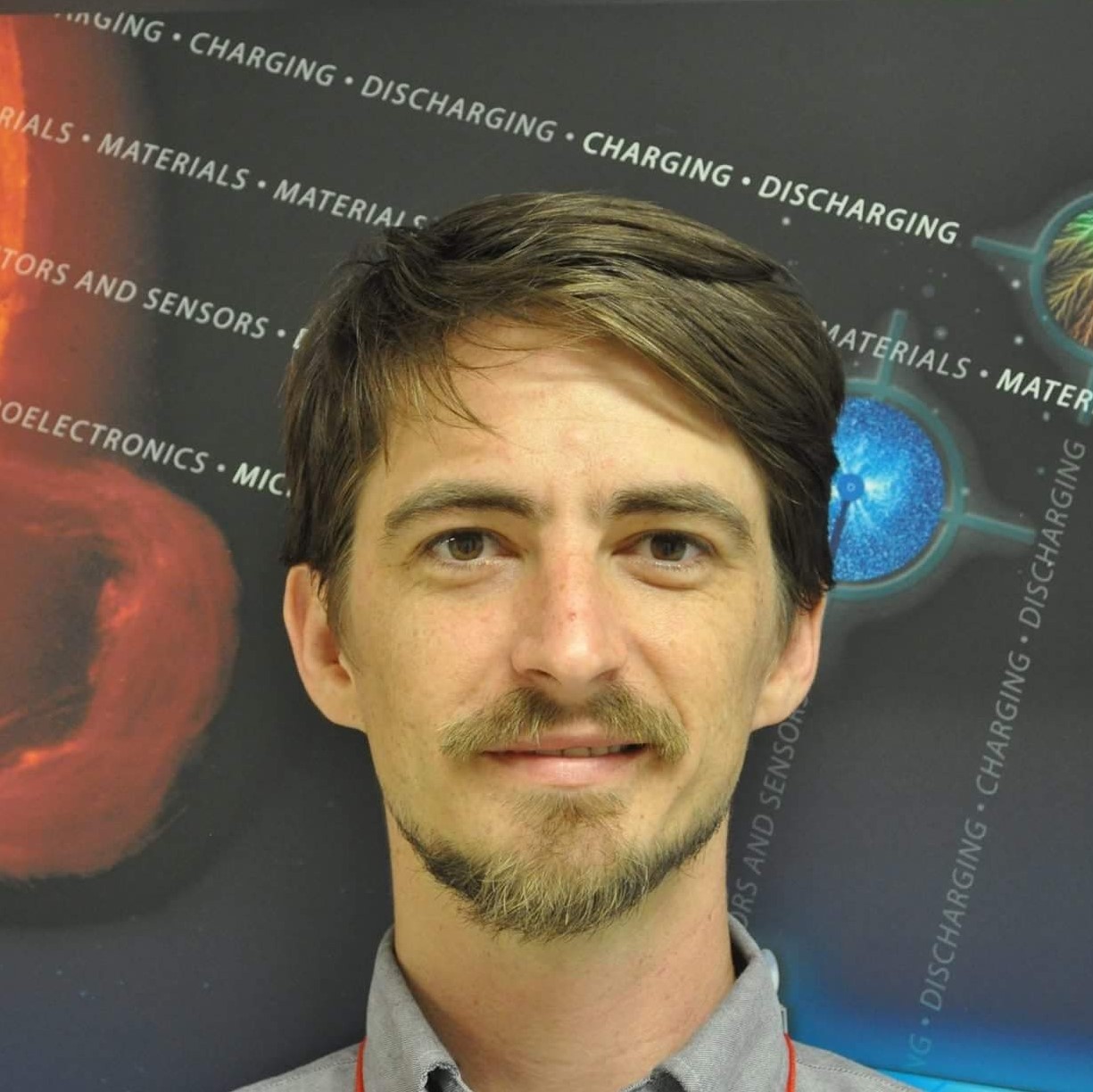
Abstract:
Adapting assurance practices to achieve radiation hardness present challenges in the fast-changing ecosystem of aerospace avionics. Recent NASA activities are working to establish a new norm in terms of standardization of process, industry partnerships, and grassroots evaluation to meet the demand. As a case study, radiation test efforts for the Handheld Universal Lunar Camera, highlight some of these adaptions.
Session 4: Technology Scouting: A Selection of Academic Result from RADNEXT with Potential for Industry
Session Chair - Françoise Bezerra (CNES)

Yolanda Morilla (University of Seville)
Academia - Industry and vice versa. Displacement Damage in COTS Optocouplers across different RADNEXT facilities

Bio:
Yolanda Morilla holds a PhD from the Universidad de Sevilla. She contributed to the installation of the first Spanish laboratory based on particle accelerators, defending her PhD Thesis in the field of Ion Beam Analysis. She has been the main researcher in several projects focused on the establishment of CNA as an irradiation testing center. She is currently the technical manager of the CNA Irradiation Unit.
Abstract:
The CNA Irradiation Unit and the company Alter have consolidated the formation of a working group that evidences the transfer of knowledge in two directions. The group is focused on both aspects of data analysis by means of mathematical algorithms and experimental campaigns of radiation effects in electronics.
One of the main works carried out by this group is the upgrading of the optocouplers compendium about radiation effects characterization. This is an extensive study carried out joining with the own manufacturers and taking advance of RADNEXT TA funding.
The global project includes the characterization of 31 part types by eight different manufacturers, performing DD, TID and SEE irradiation testing. So far, data have been gathered by the CNA-Alter team and testing at different facilities using ESCC-22500 test method for DD Neutron (14 MeV), and DD Proton (200, 60, and 15 MeV), and ESCC-22900 for TID (Co-60).
In this talk, we will focus on the Displacement Damage work, which has been fully performed using different RADNEXT facilities over the last years. Apart from this, we will present the evolution of this joint project where the synergy between academia and industry has been a fundamental pillar to obtain a successful result.
Rosine Coq Germanicus (University of Caen)
Catastrophic SiC MOSFET degradations under neutron radiation: SEB and SEGR mechanisms

Bio:
Rosine Coq Germanicus is a full professor at CRISMAT UMR6508 Laboratory (Laboratoire de Cristallographie et Sciences des Matériaux) at the University of Caen in Normandy, France. After a university degree in physics at Guadeloupe, she received her Ph.D. at the University Montpellier 2, France, in space radiation effects on optoelectronic devices. Her current research activity focuses on radiation effects and scanning probe microscopy for microelectronic devices. Her research includes nano-electrical, failure analysis and reli¬ability of integrated semiconductor devices.
Abstract:
The catastrophic degradation of a commercial Metal-Oxide-Semiconductor Field-Effect Transistor (MOSFET) SiC MOSFET is determined, explored and analyzed after a neutron irradiation experiment, Monte Carlo and Technology Computer-Aided Design (TCAD) simulations and a Failure Analysis at the die level. Under neutron irradiation, the SEB mechanism starts with the nuclear interaction of an incident neutron with a nucleus of an atom of the SiC semiconductor lattice. This reaction produces various secondary ions with different masses, atomic numbers, directions and energies. The distributions of secondary ions species with cross-section and energy distributions are determined by the DHORIN (Detailed History of Recoiling Ions Induced by Nucleons) nuclear Monte Carlo simulation code. To investigate the effect of such secondary ions on the SiC MOSFET structure under bias, the TCAD tool ECORCE is deployed for the real studied structure. With the dynamic mesh generator of the ECORCE tool of the MOSFET structure under radiation mappings are drawn with two event indicators: the electric field in the oxide and temperature at the epitaxial/SiC substrate interface. Single Event Burnout (SEB) and Single Event Gate Ruptures SEGR mechanisms are then identified.
Mehlika Arslan (Middle East Technical University)
Radiation Tests of Selected Components for YRM (Home Grown Radiation Monitor)

Bio:
Mehlika Arslan is finishing her master’s in physics at Middle East Technical University (METU), Ankara-Türkiye. She is working as a project specialist at METU-IVMER (The Research and Application Center for Space and Accelerator Technologies) under the supervision of Prof. Bilge Demirköz. Her research focuses on the development of a radiation monitor for LEO missions called YRM. In this scope, she has participated in several radiation testing campaigns, one at the METU-Defocusing Beamline (METU-DBL) and two funded through RADNEXT TA, to evaluate candidate COTS electronic components for YRM, and has investigated the resulting radiation effects.
Abstract:
YRM (Home Grown Radiation Monitor) is being developed for operation on satellites and is designed to measure proton flux between 6 and 200 MeV in 8 bins of kinetic energy and trapped electron flux in Low Earth Orbit for 5 years, with a possible upgrade later for deployment on Geosynchronous Orbit. Development models, called SB.0, consisting of 2 energy bins for protons have flown on sounding rockets and the next version, SB.1 with 4 energy bins for protons, is under construction. Commercial off the shelf electronic components are planned to be used in YRM to reduce cost. Therefore, Single Event Effects testing and analysis of the critical candidate electronic components is necessary to reduce the operational risk, data loss and loss of communication.
A test card was designed, integrating 11 candidate electronics for the control system. SEE tests were conducted up to a fluence of 3×10¹¹ protons/cm² on the test card’s components at 15 MeV and 30 MeV proton irradiation at METU-DBL, and at 60 MeV proton irradiation at UCLouvain CRC. The results were analyzed for these proton energies. To complete the scan of the full proton energy range (20–200 MeV), as recommended by ESCC, further testing with 150 MeV protons will be conducted at UMCG-PARTREC. The resulting SEEs across the entire range will be analyzed and presented.
Session 5: Alternative Approaches for testing and Modeling Tools
Session Chair - Corinna Martinella

Dale McMorrow (U.S. Naval Research Laboratory)
Surrogate Test Approaches: Enabling Capabilities for Predictive Testing Using Pulsed Lasers and Other Methods

Bio:
Dale McMorrow received the Ph.D. degree in Physical Chemistry from The Florida State University, Tallahassee, FL, in 1985. Following a postdoctoral fellowship at the University of Toronto, he joined the technical staff at the U.S. Naval Research Laboratory in 1988, and presently is head of the Photophysics and Radiation Effects Section in the Electronics Science and Technology Division. His current research interests include the development, characterization and application of laser-based methodologies for simulating singe-event phenomena in microelectronic devices and complex integrated circuits. Recent emphasis has been on characterization of the physical mechanisms responsible for the single-event response of III-V semiconductor devices, and the development of two-photon absorption as a tool for interrogating singe-event phenomena. He has authored over 250 papers in refereed journals and has served as Technical Chair for the Single-Event Effects Symposium, and as session chair for the IEEE Nuclear and Space Radiation Effects Conference (NSREC), the Radiation and its Effects on Components and Systems (RADECS) Conference, and the Single-Event Effects Symposium. He is a Fellow of the IEEE, and a Senior Member of the Optical Society of America.
Abstract:
Carrier generation induced by pulsed-laser (PL) excitation has become an essential tool for the investigation of single-event effects (SEEs) in micro- and nano-electronic structures. The qualitative capabilities of this approach include, among others, sensitive node identification, radiation-hardened circuit verification, basic mechanisms investigations, model validation and calibration, screening devices for space missions, and fault injection to understand error propagation in complex circuits. Recent effort has built upon the success enabled by these qualitative benefits, and has focused on putting the laser SEE approaches on a more quantitative basis. PL SEE approaches have made substantial progress towards predictive testing in recent years, and this talk will touch on the various capabilities enabling this effort. Such capabilities include identifying the criteria for predictive testing, tailoring the carrier distribution through beam shaping, accurately estimating of the equivalent LET, and overall improvements in laser systems for stability and wavelength tunability. The ultimate goal for predictive surrogate testing is insertion into the radiation effects characterization and qualification pipeline, such that surrogate testing approaches could prove invaluable in easing pressure on oversubscribed heavy-ion facilities.
Complementary to PL SEE, pulsed x-ray and e-beam approaches are being explored for SEE testing through the DARPA ASSERT (Advanced Sources for Single-event Effects Radiation Testing) program. A brief overview of the goals and status of the ASSERT program will be presented.
Stefania Peracchi (ANSTO)
Microbeam Testing: A Versatile Approach to Selective Radiation Effects Testing
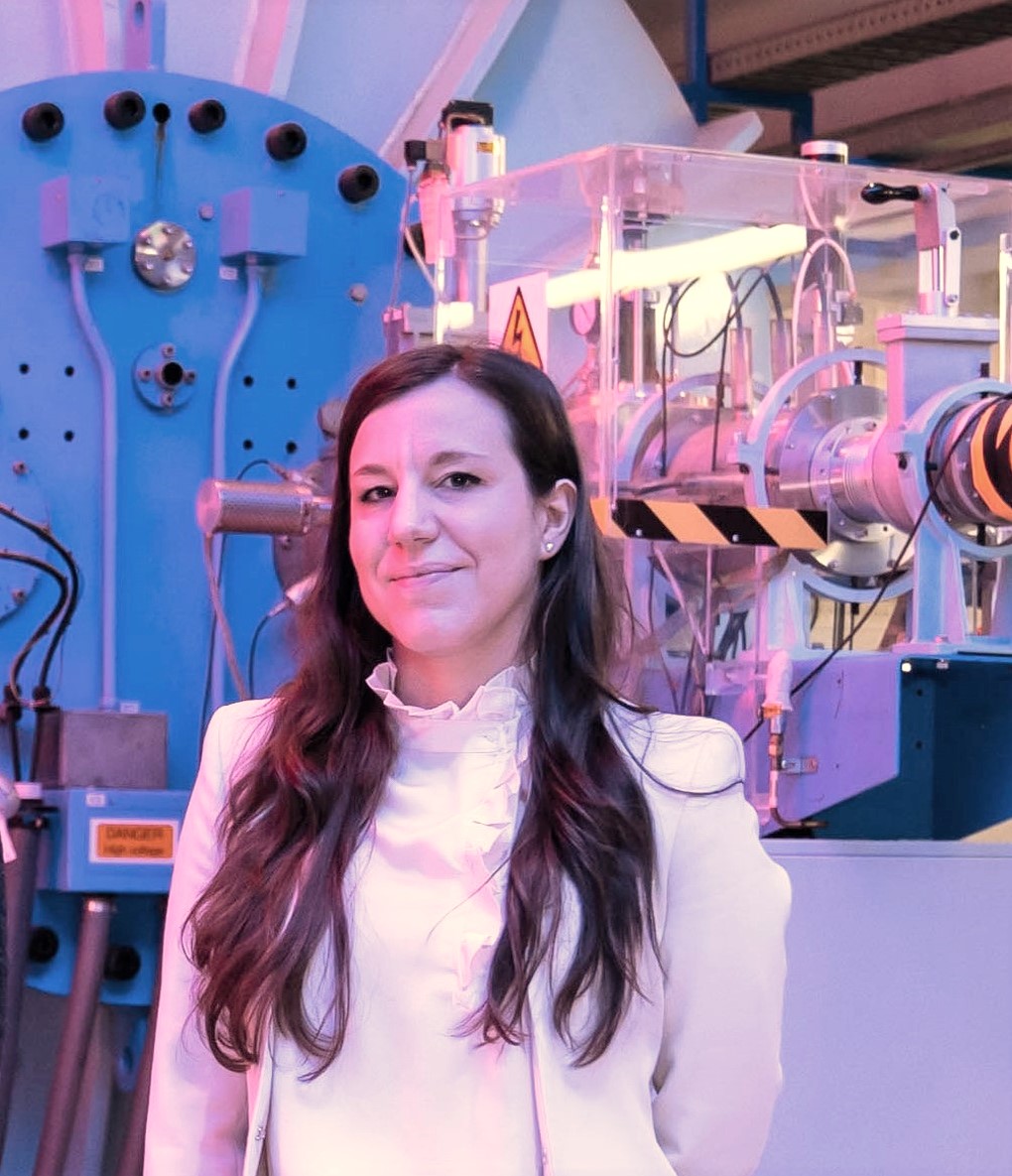
Bio:
Dr. Stefania Peracchi is an accelerator scientist, and space radiation expert at the Centre for Accelerator Science at ANSTO (Australia), where she leads research on the effects of space radiation on electronic humans and advanced materials. Stefania holds a Ph.D. in Nuclear Physics from the University of Wollongong and has contributed to over 30 publications, including a recent feature in Nature Reviews Materials. She supports research projects at national and international level, and her expertise contributed to the creation of the National Space Qualification Network for testing in Australia. Stefania is also an active member of the RADECS community bringing microbeam testing and Monte Carlo simulation knowledge.Stefania is internationally recognized for being an advocate for advancing global collaboration in space research and radiation effects, boosting space exploration towards a more affordable and sustainable way.
Abstract:
Microbeam radiation testing capabilities are a complementary methodology to conventional broad-beam approaches used in well-established international facilities.
As electronics technology continues to shrink in size, with transistors becoming increasingly smaller and chip architectures growing in complexity, understanding the localized response of individual circuit elements to radiation is more critical than ever.
Microbeams enable precise sub-micron targeting, allowing to selectively irradiate specific functional blocks within the same electronic component to assess their individual sensitivity to radiation. This capability is crucial for correlating the response of isolated components to the overall behaviour of the entire chip, providing insights into how localized radiation effects propagate through complex architectures.
This capability is particularly relevant for investigating Single Event Effects (SEE), where the ability to precisely control irradiation parameters with high spatial resolution is essential. Key parameters such as scanning resolution, dwell time, and particle rate play a crucial role in defining the conditions under which SEE occur, allowing for a detailed assessment of device sensitivity to radiation. Additionally, the intrinsic rapid raster scanning feature of the microbeam enables efficient sensitivity mapping, allowing to systematically probe and identify the most vulnerable regions of a device. This capability is particularly useful for quickly detecting weak links within complex microelectronic architectures, ensuring that critical areas can be further investigated in a targeted manner.
With its flexible highly controlled parameters, and application-specific radiation exposure, the microbeam complements traditional broad-beam methodologies, serving as a powerful tool for radiation-hardness design applications.
Furthermore, the microbeam can be used in correlation studies with laser and highly focused X-ray beams, enabling a comprehensive multi-technique approach to understanding SEE mechanisms and validating alternative radiation testing methodologies.
This talk will explore the versatile capabilities of microbeam testing, highlighting its precision, control, and applications in radiation effects research.
Gideon Adom-Bamfi (KU Leuven)
Microbeam Testing and Interfacing: Machine Learning Driven Analysis Techniques
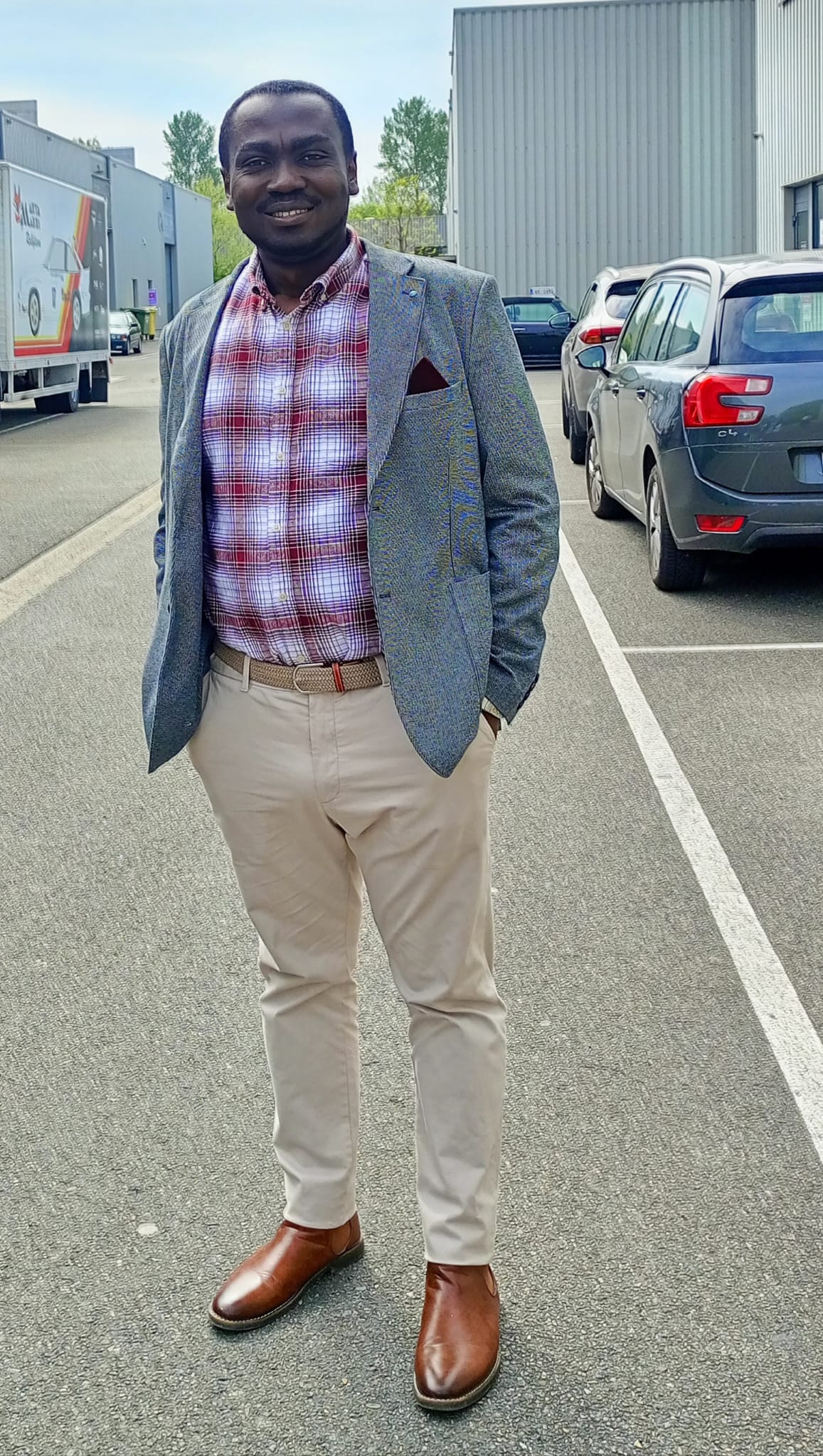
Bio:
Gideon Adom-Bamfi is a Ph.D. researcher at KU Leuven in Belgium, specializing in radiation-hardened integrated circuits. His research focuses on the design and testing of radiation-tolerant CMOS LC-tank oscillators for space and high-energy applications. He has experience in heavy-ion irradiation experiments and advanced circuit modeling. In this talk, he will share insights from SEE testing using microbeam heavy ions at GSI, addressing challenges and opportunities.
Abstract:
Single Event Effects (SEE) testing is critical for assessing the radiation tolerance of modern electronics, particularly in space and high-energy physics applications. We will present our experience with SEE testing using microbeam heavy ions at GSI, highlighting the challenges and solutions encountered during device under test (DUT) scanning. We will discuss the interfacing techniques used for precise DUT positioning and scanning, as well as the non-idealities observed, particularly false triggering due to secondary effects. To mitigate these issues, we introduce a novel machine learning-based clustering approach that effectively differentiates real events from false triggers, significantly improving the accuracy of experimental results.
Frédéric Wrobel (University of Montpellier)
Key Ingredients of Monte Carlo Tools to Predict Single Event Occurence

Bio:
Frédéric Wrobel is Full Professor at the University of Montpellier.
His main field of expertise is the radiation-matter interaction applied to the reliability of integrated electronic devices. He works on Monte Carlo nuclear code that simulate the interaction of neutron and proton with matter. He also works on tools for predicting Single Event in electronic devices.
He is author and co-author of over 200 articles in journals and international conferences and has become a member of Institut Universitaire de France (IUF) in 2012.
Abstract:
We explore the use of the Monte Carlo method to predict the impact of Single Event Effects (SEE) on electronic components exposed to energetic particles (ions, protons, neutrons) originating from space or ambient radioactivity. These particles interact with matter, causing ionization that can disrupt the operation of microelectronic devices. The study adopts a multi-scale and multi-physics approach, modeling these interactions through various stages: radiation environment, particle interaction, charge transport, and circuit-level effects. Due to the complexity of these phenomena, the Monte Carlo method approach is preferred, as it allows for the simulation of many scenarios to estimate the probability of SEE occurrence. Different modeling approaches, such as the RPP model and the diffusion-drift model, are presented, along with several simulation tools, including PredicSEE, developed at the University of Montpellier. Case studies on different technologies illustrate the impact of SEE on circuits and the influence of design parameters such as transistor sizing and cell layout. In conclusion, the Monte Carlo method proves to be a powerful and flexible tool for analyzing circuit sensitivity to SEE and optimizing their design to reduce vulnerability to radiation effects.
Gilles Gasiot (STMicroelectronics)
Radiation Effect Modelling: An Industrial Point of View

Bio:
Gilles Gasiot received the Ph.D. degree in Microelectronics from the Université of Bordeaux, France in 2004. Since then, he has been with STMicroelectronics, Crolles, France and is now Principal Engineer and Senior Member of the Technical Staff. He has coauthored 10 patents and more than 100 articles, including outstanding paper (RADECS 2001 and NSREC 2023).
Abstract:
This presentation topic is radiation effect modeling to predict SEU/SET cross section of digital devices (SRAM, Flip-Flop, combinational cells, etc.). A brief review of the different modeling approach will be done (RPP, diffusion, etc.). ST proprietary tool will then be presented, and some use case will be shared. Last section will emphasize on the usage of AI techniques in modeling to leverage on their computational efficiency to embed more physics and improve accuracy in predicting non-planar technologies.
Panel Discussion: Guidelines and Limitations for WBG Power Device Testing
Corinna Martinella - Senior Scientist - Chair

Bio:
Corinna Martinella received the MSc degree in Nuclear Engineering from Politecnico di Milano in 2016. She obtained the PhD degree in Applied Physics from the University of Jyväskylä in 2021 in the framework of a collaboration with the European Organization for Nuclear Research (CERN), and the Advanced Power Semiconductor (APS) Laboratory at ETH Zurich. Her research was focused on the basic mechanism of radiation damage and reliability of commercial SiC power devices for aerospace and high-energy physics applications. Between 2022 and 2025, Dr. Martinella worked at the APS Laboratory, part of the Department of Information Technology and Electrical Engineering (D-ITET) at ETH Zurich, first as a Postdoctoral Researcher and Lecturer in Power Semiconductors, and later as Senior Scientist. Her technical interests include wide-bandgap power devices, testing and modeling of radiation effects, reliability and failure analysis, investigation of radiation-induced defects, and exploration of doping techniques for the next generation of power components.
Francesco Pintacuda (STMicroelectronics) - RAD-Hard Design Manager and Radiation expert for Power Transistors - Co-Chair

Bio:
Francesco Pintacuda received his graduate in Electronic Engineer at Palermo University in 2001. Since 2002 he has been working in STMicroelectronics as power discrete transistor designer. The actual position is rad-hard design manager for power transistor inside the R&D Power & Discrete Group. In his job, he acquired experiences in radiation effect (Co60,X-ray, heavy ions) for space application, cosmic ray effect for avionics and automotive power application, and advanced reliability. Since 2016 he has research projects (Characterization of Gate oxide of Silicon and SiC Power Mosfet by X-ray source -- Characterization of Silicon and SiC Power Device by atmospheric neutron and alpha particle) with Physical and Chemistry department of Palermo University. Since 2020 he has research project with European avionics company to introduce the SiC power Mosfet is new electrical vehicles. He has research cooperation with IRT- Saint Exupery inside SICRET and SICRET+project. He has different research activities inside the SWIMMR -UK program with ISIS/CHIPIR Facility. Since 2022 he cooperates with ISIS@MACH- Italia and Tor Vergata University about atmospheric neutron interaction on power mosfet and inside the MONitron project. He is a Technical Leader for EPOSIC – ESA project. He is author or co-author of more than 20 of technical and conference papers and a few invitations talking in different conferences.
Silvia Massetti (ESA)
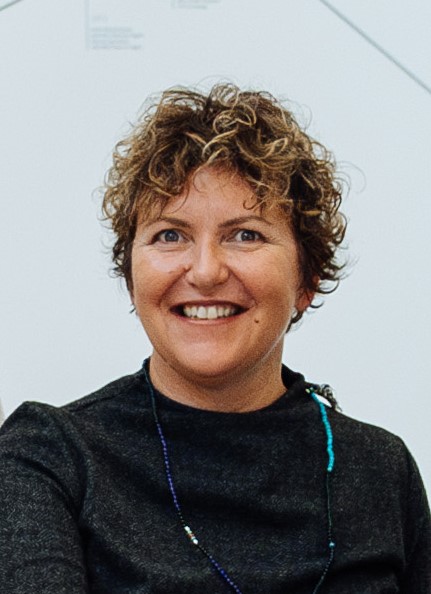
Bio:
I joined ESA in 2010 as Senior component engineer at project support. Part of my time has been dedicated to follow research studies and, in particular, I was appointed to develop a roadmap for SiC devices for space applications. I was the technical officer of TRP studies relevant to evaluation of SiC devices and technology. Now, I am responsible of EPOSIC project (pillar of the sovereignty component of GSTP) aimed to develop a power module based on SiC MOSFET with a SoA higher than 400V for space application. Before joining ESA, I have been working in TAS and I was responsible of the development of the SiC blocking diode to be used in Bepicolombo and after Solar Orbiter solar panels.
Marc Marin (Alter Technology TüV Nord France)
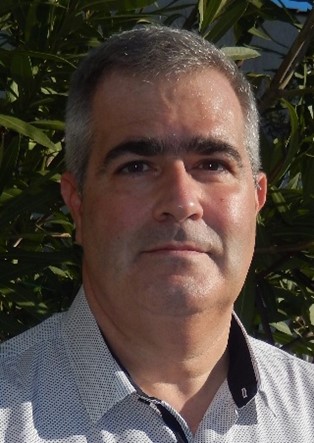
Bio:
More than 20 years in Space Industry with Thales Alenia Space and Airbus Defence and Space, involved in telecommunication/Earth Observation /scientific satellites and telecommunications constellations as well
· 15 years in Thales Alenia Space as EEE Parts Engineer and Radiation Engineer
· 8 years with Airbus Defence and Space as EEE Parts Program Engineer and then Head of EEE parts and Radiation Engineering for France
I joined Alter Technology TüV Nord France as Technical Director taking care of 3 laboratories: Single Event, Electrical test and Reliability, and Technology Analysis laboratories.
Jean-Baptiste Sauveplane (CNES)
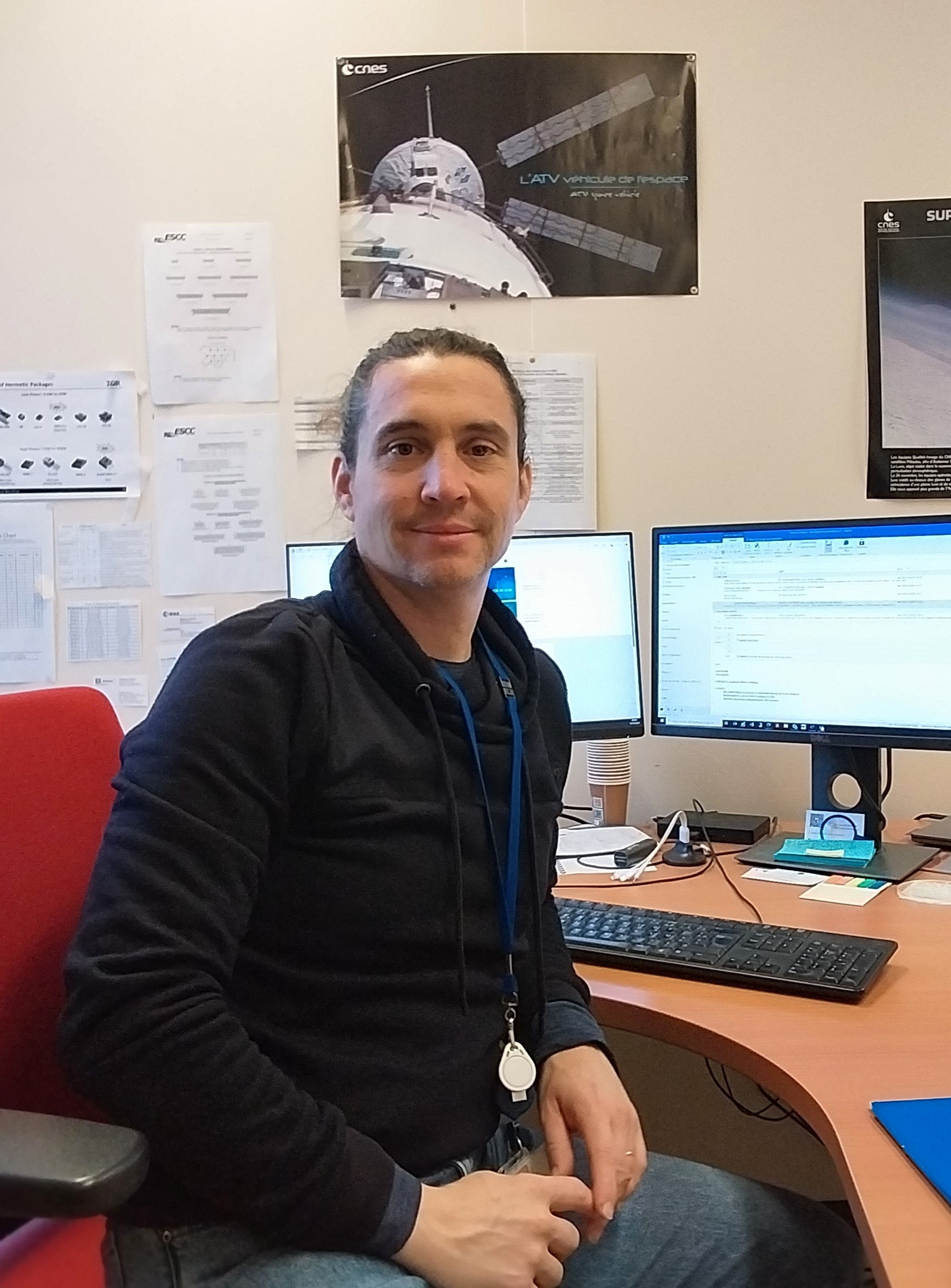
Bio:
I work for CNES since 2009 in the quality and expertise division as EEE component expert in charge of power devices and linear integrated circuits with a particular research focus on power GaNFET and SiC Schottky diode sensitivity to heavy ions.
Magali Haussy (Thales Alenia Space Belgium)

Bio:
Magali Haussy is currently responsible for Space Radiation Effects on Satellites and Launchers at Thales Alenia Space in Belgium. She leads efforts to understand and mitigate the effects of space radiation on satellite electronics and materials, ensuring the reliability of power electronics subsystems that are critical to satellite performance. Her work is vital in balancing the risks of radiation-induced failures with the costs and design constraints of satellite systems.
In addition to her work at Thales Alenia Space, Magali Haussy serves on the Industrial Advisory Panel of the RADNEXT project, a European initiative led by CERN that focuses on radiation testing and research for space and avionics applications. In this capacity, she advises on strategic and technical matters, contributing to the broader scientific and industrial community.
Renaud Mangeret (Airbus Defence & Space)
Bio:
Renaud Mangeret received his PhD in electronics from the Paul Sabatier University, Toulouse (France) in the Materials and Components for Electronics Department in 1992. Since 1995 Renaud has been with Matra Marconi Space/Astrium/EADS Astrium/Airbus Defence and Space and has been nominated as Transnational Radiation Senior Expert in 2016.
He is responsible for all aspects of radiation hardness assurance solutions for use of sensitive devices in space programs (telecommunications, Earth observation, interplanetary scientific and constellations).
Renaud is chairing the Radiation Working Group of the ESCC Component Technology Board and currently serves as Treasurer for the RADECS Association Steering Committee.
Pierre Garcia (TRAD)

Bio:
I have been working at TRAD for 16 years in the test department. I am experienced in managing Total Ionizing Dose (TID) and Single Event Effects (SEE) testing. Our deep understanding of radiation effects, environment, simulation based on over 30 years of expertise, enables us to address our customers’ challenges in both the traditional space market and the emerging New Space sector.
Michael Campola (NASA)
